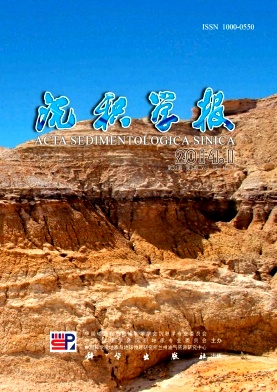Control of Sedimentary Facies Alternation on Water Soluble Salts in Inland Lake Sediments as a Paleoenvironmental Proxy: A case study from Xining Basin
- Publish Date: 2014-02-10
-
Key words:
- Xining Basin /
- water dissolved salts /
- sedimentary facies /
- paleoenvironment
Abstract: It is significant for using China inland basins deposition to obtain the Cenozoic continental climate change records that we appropriately acquire paleoenvironmental proxies and examining their validity for a long-term scale. Water dissolved salts, as a paleoenvironmental proxy, has widely applied to the field of inland lake sediments with stable sedimentation. However, it is required to examine when this proxy has been used to the lake sediments with significant sedimentary facies alternation. In this study, we focus on a set of strata of inland lake sediments consisting of mudstones/gypsum alternations in Xiejia section, Xining Basin, age ranging from Eocene to Miocene. The investigation of water dissolved salts in Xiejia Section sediments shows the strong control of lithology alternations on variations of water dissolved salts concentrations. Specifically, the gypsum and mudstone layers correspond to the high/low concentrations of Ca2+, SO2-4 and Sr2+, respectively. The lower part of this section sediments with widely spread gypsum layers has low concentrations of Na+ and Cl- and high concentrations of Ca 2+, SO2-4 and Sr2+ ; The upper part of this section sediments lack of gypsum layers has slight high concentrations of Na+ and Cl- and low concentrations of Ca2+, SO2-4 and Sr2+. Based on the sedimentary facies analysis, the gypsum and red mudstones layers are corresponding to shallow playa lake and distal alluvial fan, respectively. The evolution from distal alluvial fan and shallow playa lake alternations in the lower part of this section to distal alluvial fan in the upper part indicates a regional aridification process. The water dissolved salts in Xiejia section, strongly controlled by sedimentary facies alternations, clearly indicate a dry trend occurred at about 33 Ma. Hence, for the inland lake sediments with significant sedimentary facies alternations, not only the solubility limit control on the carbonate-sulfate-halide sequences in the d inland lake water, but the differences of water dissolved salts occurrence and activity between different sedimentary environment, of solute types provided by the source area, should be taken into account.
| Citation: | Control of Sedimentary Facies Alternation on Water Soluble Salts in Inland Lake Sediments as a Paleoenvironmental Proxy: A case study from Xining Basin[J]. Acta Sedimentologica Sinica, 2014, 32(1): 101-109. |






 DownLoad:
DownLoad: